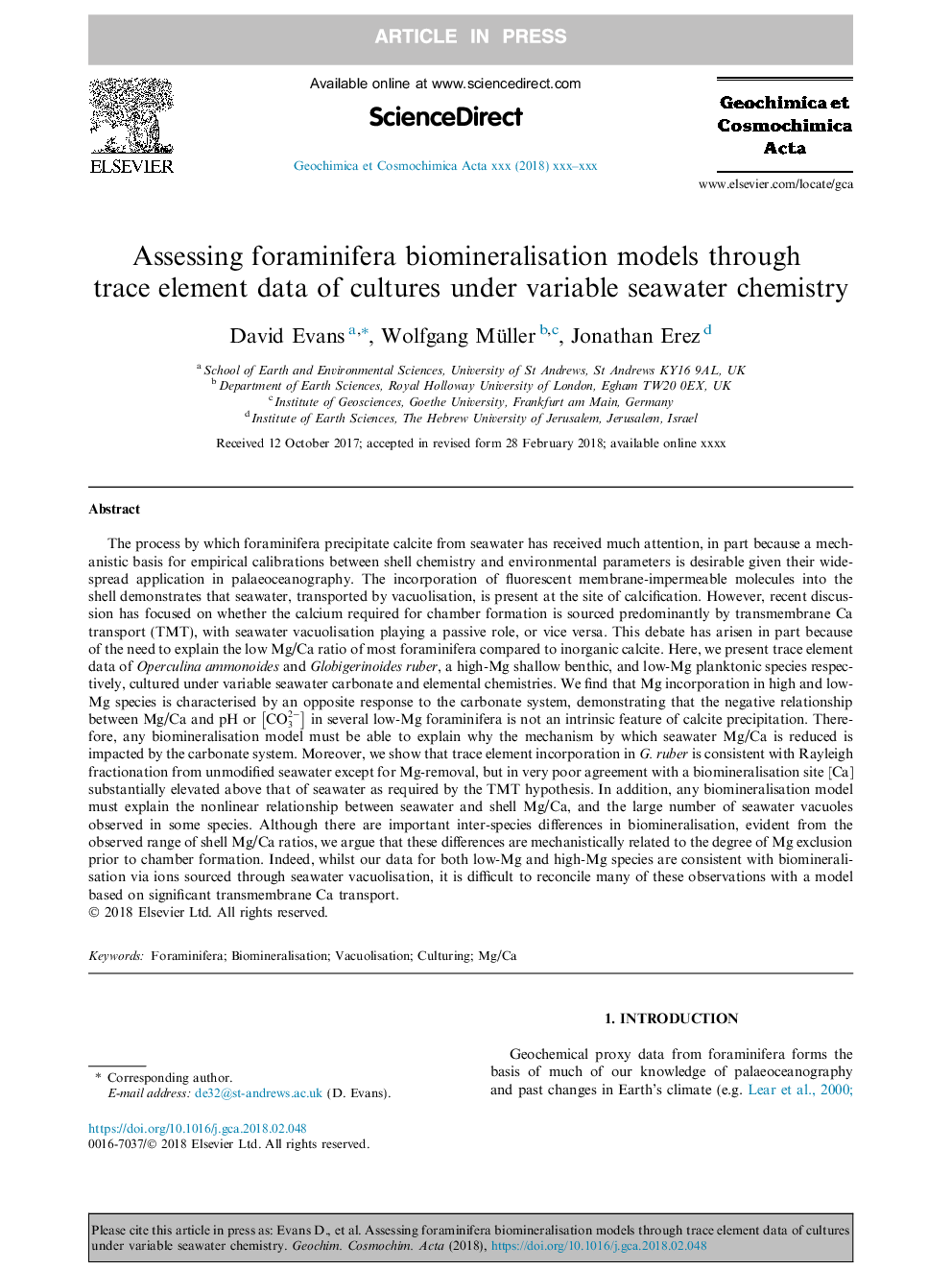| Article ID | Journal | Published Year | Pages | File Type |
|---|---|---|---|---|
| 8910653 | Geochimica et Cosmochimica Acta | 2018 | 20 Pages |
Abstract
The process by which foraminifera precipitate calcite from seawater has received much attention, in part because a mechanistic basis for empirical calibrations between shell chemistry and environmental parameters is desirable given their widespread application in palaeoceanography. The incorporation of fluorescent membrane-impermeable molecules into the shell demonstrates that seawater, transported by vacuolisation, is present at the site of calcification. However, recent discussion has focused on whether the calcium required for chamber formation is sourced predominantly by transmembrane Ca transport (TMT), with seawater vacuolisation playing a passive role, or vice versa. This debate has arisen in part because of the need to explain the low Mg/Ca ratio of most foraminifera compared to inorganic calcite. Here, we present trace element data of Operculina ammonoides and Globigerinoides ruber, a high-Mg shallow benthic, and low-Mg planktonic species respectively, cultured under variable seawater carbonate and elemental chemistries. We find that Mg incorporation in high and low-Mg species is characterised by an opposite response to the carbonate system, demonstrating that the negative relationship between Mg/Ca and pH or CO32- in several low-Mg foraminifera is not an intrinsic feature of calcite precipitation. Therefore, any biomineralisation model must be able to explain why the mechanism by which seawater Mg/Ca is reduced is impacted by the carbonate system. Moreover, we show that trace element incorporation in G. ruber is consistent with Rayleigh fractionation from unmodified seawater except for Mg-removal, but in very poor agreement with a biomineralisation site [Ca] substantially elevated above that of seawater as required by the TMT hypothesis. In addition, any biomineralisation model must explain the nonlinear relationship between seawater and shell Mg/Ca, and the large number of seawater vacuoles observed in some species. Although there are important inter-species differences in biomineralisation, evident from the observed range of shell Mg/Ca ratios, we argue that these differences are mechanistically related to the degree of Mg exclusion prior to chamber formation. Indeed, whilst our data for both low-Mg and high-Mg species are consistent with biomineralisation via ions sourced through seawater vacuolisation, it is difficult to reconcile many of these observations with a model based on significant transmembrane Ca transport.
Related Topics
Physical Sciences and Engineering
Earth and Planetary Sciences
Geochemistry and Petrology
Authors
David Evans, Wolfgang Müller, Jonathan Erez,
